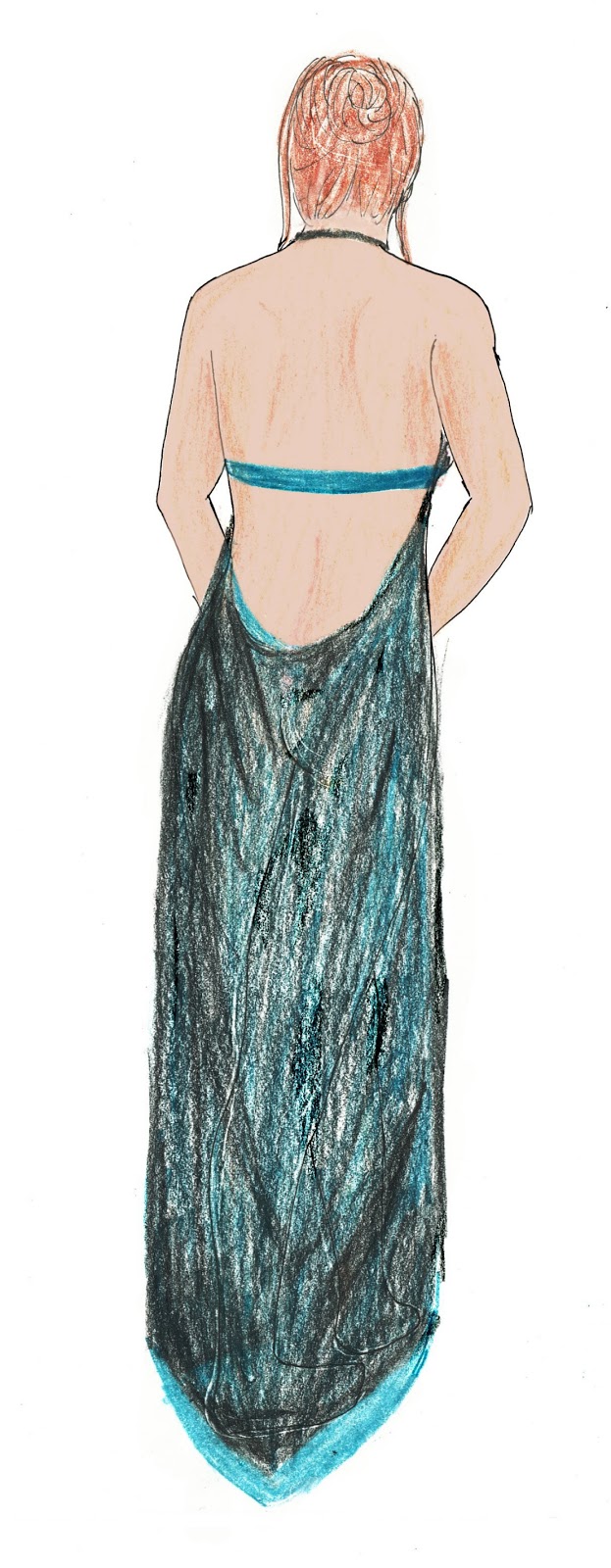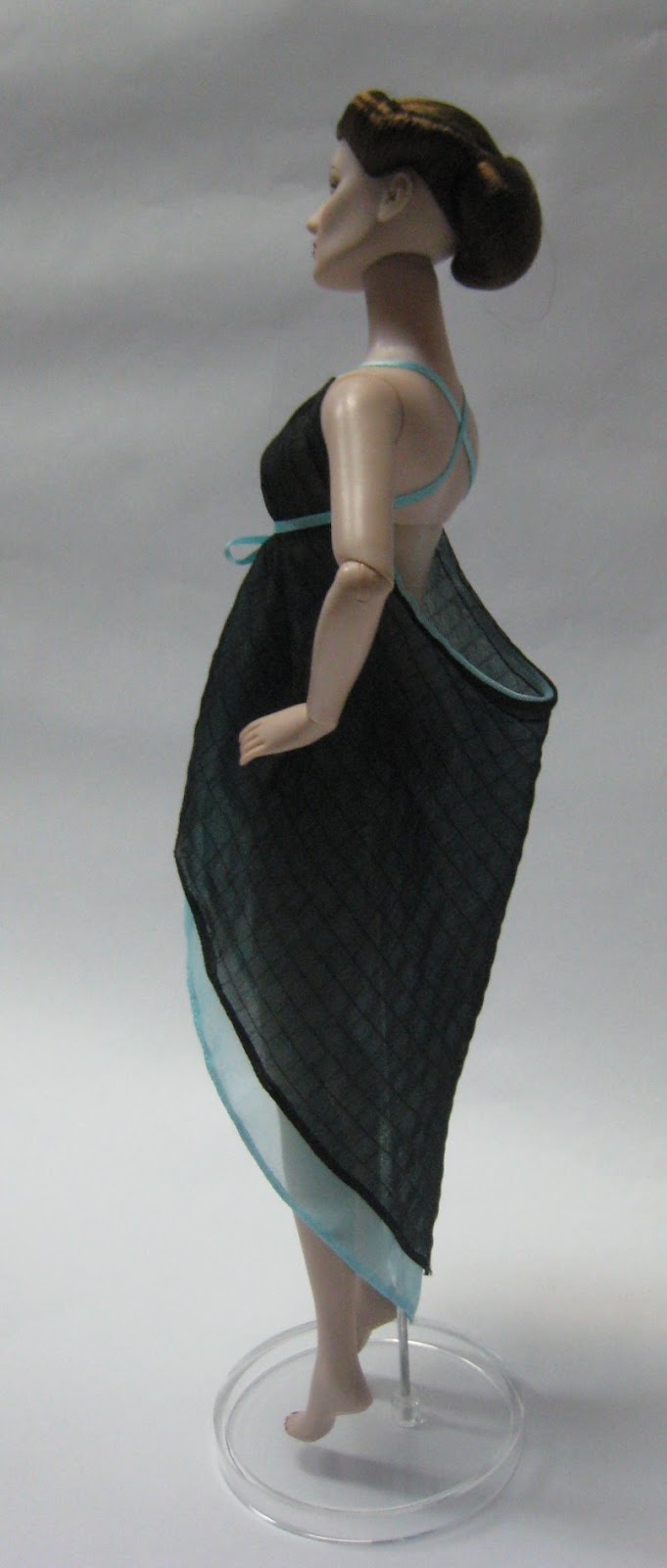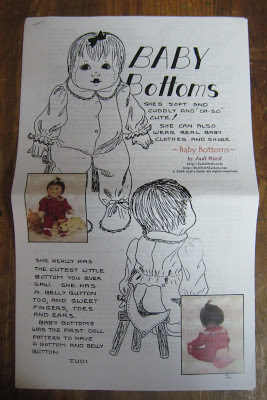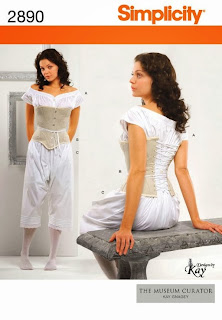While the cover is what grabs our attention, the back of the envelope is an important part of the pattern, often giving us more "meaty" info after the cover image grab our attention.
Things you often find on the envelope back include:
Material list with suggested fabric types
Yardage amounts needed
Size charts
Written description of pattern.
Secondary illustrations
So for this post I pulled out patterns from my stash and took pictures of the envelope backs. The patterns are clothing and craft related, all in one post.
Once again I am only reviewing the content and layout of the pattern covers and not the actual patterns themselves.
Also some pattern makers have/may have/possibly will change the format of their pattern envelopes.
Lets start with the "Big Three" again, this time using
Butterick 3721 as our example.
Butterick is a "standard" size pattern envelope from the big three, which are roughly the size of a letter size paper folded in half.
The flap has the pattern number (twice) and size chart.
This pattern is called "Men's Historical Costume" and then described using style and fit descriptions.
Notions and fabrics are listed, and yardage amounts are on a chart.
Since this is a big pattern company it is also written in Spanish.
At the bottom of the envelop are the "flat" illustrations of the garments made with this pattern (coat and vest)
This is the format that most people are familiar with since they are readily available in all chain (and many independent) fabric stores.
Good points about this back
Bilingual (though that does effectively halve the amount of space that can be used.)
The flap is not hiding any data when it is folded out.
Issues I see with the back
"Historical costume" is not very descriptive about era, but that is what we normally get from the big three, they are not big on historical accuracy.
When Flap is folded in, the sizing chart is not visible.
Next up is
Folkwear
This is pattern 211 Two Middies C 1980, my copy is an older one, so it may not be what Folkwear looks like today.

It is a large envelope (to hold letter size paper) and my flap is missing, so I can't tell you what info was there, if I had to guess I would say the pattern number.
On the left is the description, giving some historical data (1920's) and also saying that the middies are for both genders.A skirt pattern is also included, even though the pattern is tittled Two Middies.
Then there is a view of the back of the garments.
Last is the notions list
On the right is the sizing chart, which doesn't use measurement, but relies on standard sizing.
Then a yardage chart
Finished measurements are given and last is the Suggested Fabrics.
Good points about this back
Large illustrations of the back views
The flap is not hiding any data when it is folded out.
History!
Issues I see with the back
No flat drawing of the front view.
Why is the suggested fabrics AFTER the yardage chart?
The one copy of an
Ageless Patterns that I have was apparently sold in a plastic bag instead of paper envelope. What passes for the envelope cover is a piece of card-stock which serves as both front AND back covers.

It also serves as instructions.
Pattern number is at the upper left
A size chart is at the top, then the pattern pieces are numbered.
Yardage is given as a range, since this is a multi-sized pattern. Seam allowance width is noted, then come the sewing instructions which reads more like the period description (I believe from Harpers Bazar?)
Good points about this back
Size chart is right there at the top.
Pattern pieces are listed, named and numbered.
Historical Description (though no source is cited)
Suggested fabrics is given. (drilling and a modern equivalent)
Issues I see with the back
You can't see it in the plastic bag with the pattern behind the "cover"
Is this is all the instructions there is? (mine is a used copy)
Kannik's Korner
I have a few of these in my collection, photographed is KK4303 Men's Trousers 1790-1810 which was sold in a plastic bag. I have an older pattern of theirs that was sold as a large paper envelope, the backside of that envelope was blank! (Remember what I said about pattern makers changing formats)

The pattern front is actually half of a Tabloid sheet of paper 11X17" and forms their instructions, so this isn't really a back cover, but it is what you see on the back, along with the pattern pieces.
This is the start of the Historical Documentation.
Good points about this back
Title, date, pattern number are right up top where they are not buried by the tissue pattern in the bag.
Issues I see with the back
No size chart, yardage chart, or other info that one would expect on the envelope back. In fact that info is a few pages in, after all the lovely historical information.
Laughing Moon
This pattern #109 is in the same envelope size as the Big Three.
On the flap is the size chart.

On the left is the title followed by the flat illustration of the garments included in this pattern then a description with some historical info which leads right into suggested materials and notions.
On the right is the yardage chart follwed by some more notions, last is the pattern makers info.
Good points about this back
Flats on the front and back view of the included patterns
Some historical info (more with the instructions)
Issues I see with the back
When Flap is folded in, the sizing chart is not visible. When the flap is out, other information is blocked.
The way the historical info runs into the suggested fabrics could lead to some confusion.
Rocking Horse Farm
This is #153 Waistcoat 1790-1820
Letter size paper in the horizontal format (Cover is in the more usual portrait orientation.) sold in plastic bag.
This pattern back is a bit unusual in that it tells you how many of each pattern piece to cut and seam allowance, those are normally found in the instructions.(The instructions are just the backside of this page.)
Good points about this back
Illustration (same as on front)
Some historical info (more with the instructions)
Yardage, notions and suggested materials are listed.
Issues I see with the back
No size chart (it is on the front)
J. P. Ryan
This is the waistcoat pattern, and a used copy, the pattern is not numbered, J. P. Ryan may have given it a number now. Letter size paper sold in a plastic bag.
This pattern was sold i n single sizes and the size in this pattern was highlighted.
A bit of historical description and then a size chart, followed by fabric requirements and notions. Last is suggested fabrics.
Good points about this back
Large font is easy to read.
Some historical info
Yardage, notions and suggested materials are listed.
Issues I see with the back
I would have loved to have seen a back view of the garments as none was on the cover front.
Truly Victorian
This is TV456 1856 Gathered Dress as is says right at the top on the pattern back. The pattern back is Letter size paper sold in a plastic bag. The cover is Legal sized and folds over the bottom to cover the back.

Underneath the fold over flap is the pattern makers info, so no important info is really hidden.
Starts off with historical info, then yardage requirements and notions, last is their unique sizing chart.
Good points about this back
Large font is easy to read.
Some historical info
Yardage, notions and suggested materials are listed.
Their sizing chart is LOVELY
The fold over flap is a unique feature to TV patterns
Issues I see with the back
A small illustration would have been a nice addition.
Now to will leave the world of costume patterns and take a look at the craft patterns
Smallworks
Dragon pattern
Printed on letter sized paper
Tools and Materials list on the left
Tips are included
Good points about this back
Large font is easy to read.
tips for making your dragon unique
Issues I see with the back
No yardage requirements listed (in instructions)
Marilyn Halcomb is an Australian designer whose patterns may be purchased at
Dollmakers Journey and other places.

Since this is of Australian publication the paper size is different from
American Leter, it is closer to 8 1/4 X 11 3/4" this pattern was sold
folded in half, so that one sheet formed the front and back the back
half contains materials list.
Good points about this back
Materials list and legal disclaimers
Issues I see with the back
Finished size of dragon is not mentioned (not on front either)
Elan patterns are available at
SewSassy and other bra making suppliers.
This is B540, I am looking at.
The pattern cover front and back are printed on one letter sized sheet, which is folded in half to make the front and back.
It is printed in a different orientation from the front, so that you must rotate to read the back when you flip it over.
Topis the pattern maker in the upper left, the upper right has the pattern number.
Next is the pattern description, then the materials list and yardage requirements.
Last is pattern makers contact info and legal disclaimers.
Good points about this back
Materials list, yardage amounts and legal disclaimers. pretty much everything one would want.
Issues I see with the back
No secondary images
Silver Lining Originals is a quilt pattern company Published by Make it Easy Sewing & Crafts, A
Quilt Woman.com Company
This is the
Lap-Lop Bunnies, a paper pieced quilt pattern
The pattern cover front and back are printed on one letter sized sheet, which is folded in half to make the front and back, inside of a plastic bag.
Top is a description, next come fabric yardages, since this is a quilt pattern, the use of quilting cottons is assumed, so the only fabric suggestions is in color.
Lower left is the publishers information, lower right is the designers information, then a barcode.
Copyright is on the bottom
Good points about this back
Everything one could expect and a barcode!
Issues I see with the back
None for a quilt patten.
Needlesongs by Carol Bruce is a quilt pattern company

This is the
Dream Castles Fusible Applique pattern that I am looking at.
The pattern back is half of a letter sized sheet in a plastic bag.
Starts off with pattern title, then description, which includes size. (Which was not on front.)
Materials list and yardages, stating "100% cotton, prewashed and ironed."
Copyright and contact information is on the bottom.
Good points about this back
Everything one could expect, well laid out.
Issues I see with the back
None for a quilt pattern
Judi's Dolls by Judi Ward
This time I am looking at
9-12 Month Size Baby.
The pattern cover front and back are printed on one legal sized sheet, which is folded in half to make the front and back. The front has a color photo and the pattern is copyrighted 1978.
Starts off with the Materials list, which includes yardages and then runs into the description
Good points about this back
Materials list and yardage is there as is a description of the pattern. (sized to fit real baby clothes)
Issues I see with the back
There isn't a space between the materials list and the description, it all flows together down the page.
In conclusion
And there we have it, I have reviewed costume, and craft patterns. I think I have a better idea of what is important to me, and how much format means to a buyer.
In the end, What goes on the pattern back is what the maker feels is important, What do you as a purchaser want to see on the back?
 This is a one-size garment, I am 5’4” with a 33” bust, so you may wish to enlarge the cut out template a bit for larger sizes.
This is a one-size garment, I am 5’4” with a 33” bust, so you may wish to enlarge the cut out template a bit for larger sizes.


 I decided to have some fun and make each one different.
I decided to have some fun and make each one different.



 Right My Fair Piggy by Tonner wears a second square version, with the hems at the same length. this one has neck ties that will adjust to fit different bodies, the waist ties go through loops at the sides so there is adjust-ability there as well.
Right My Fair Piggy by Tonner wears a second square version, with the hems at the same length. this one has neck ties that will adjust to fit different bodies, the waist ties go through loops at the sides so there is adjust-ability there as well.











































